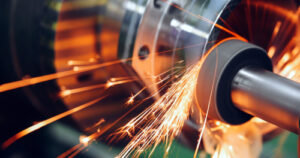 Top Metal Finishing Techniques to Enhance Durability and Aesthetics
Top Metal Finishing Techniques to Enhance Durability and Aesthetics
Metal finishing is an important process in manufacturing and construction. It enhances the durability and aesthetics of metal objects by providing a protective layer that shields them from corrosion, wear and tear, and other environmental factors. Over the years, different metal finishing techniques have been developed, each with its unique benefits and applications. In this blog post, we will discuss the top metal finishing techniques that you should know about to enhance the durability and aesthetics of your metal objects.
1. Powder Coating
Powder coating is a popular metal finishing technique that involves applying a dry powder to metal surfaces and heating it to form a protective and decorative layer. The process is simple and efficient, as it does not require solvents or chemicals to achieve the desired effect. The powder used in powder coating is made from a combination of resins, pigments, and other additives. After electrostatically charging the powder, it is sprayed onto the metal surface. Then, the metal object is heated, causing the powder to melt and bond evenly to the surface. Powder coating provides better durability, resistance to corrosion, and is more environmentally friendly compared to traditional painting techniques.
2. Anodizing
Anodizing is a metal finishing technique that involves creating a protective layer of oxide on the surface of a metal object. The process is primarily used on aluminum, but it can also be used on other metals such as titanium, magnesium, and zinc. Anodizing is achieved by immersing the metal object in a solution of sulfuric acid and then passing an electric current through it. This process creates an oxide layer that is thicker and harder than the metal itself. Anodizing provides better resistance to corrosion, wear and tear, and enhances the color and appearance of the metal surface. It also provides better adhesion for paint, making it a preferred metal finishing technique for products that require painting.
3. Electroplating
Electroplating is a metal finishing technique that involves coating a metal object with a thin layer of another metal using electrochemical processes. This technique is commonly used to provide a decorative and protective finish to metal objects. The metals commonly used for electroplating include copper, nickel, chrome, gold, and silver. The process involves placing the metal object in a solution that contains ions of the metal to be deposited on the surface. Then, an electric current is passed through the solution, causing the metal ions to bond with the metal object’s surface. Electroplating provides a durable and decorative finish that protects the metal surface from corrosion, scratching, and wear and tear.
4. Passivation
Passivation is a metal finishing technique that involves removing impurities and contaminants from metal surfaces to improve their corrosion resistance. This technique is commonly used to treat stainless steel and other alloys that are prone to corrosion. The process involves immersing the metal object in a solution of nitric acid or citric acid, which then reacts with the metal surface, removing any surface contaminants and creating a passive layer that is more resistant to corrosion. Passivation provides a smoother and more even surface, enhances the metal’s appearance, and improves its resistance to corrosion.
5. Black Oxide Coating
Black oxide coating is a metal finishing technique that involves converting the metal’s surface into a black oxide layer using a chemical reaction. This technique is commonly used to provide a decorative and protective finish to metal objects. The process involves immersing the metal object in a solution of sodium hydroxide, nitrates, and other chemicals, which then reacts with the metal surface, producing a black oxide layer. The black oxide layer provides increased corrosion resistance, wear resistance, and enhances the metal’s appearance. Black oxide coating is commonly used on steel, copper, and brass objects.
Conclusion
Metal finishing techniques play a crucial role in enhancing the durability and aesthetics of metal objects. From powder coating to black oxide coating, each technique has its unique benefits and applications. By understanding the different metal finishing techniques, you can choose the one that suits your needs to provide optimal protection and aesthetic appeal to your metal objects. Investing in metal finishing can significantly improve the lifespan and usability of your metal products.
Got questions about metal finishing? Let us help! Contact us today to learn more about what we can do for you!

